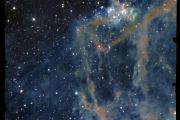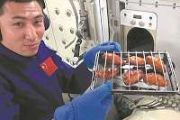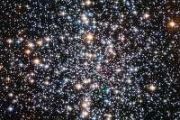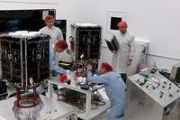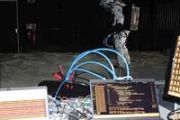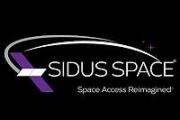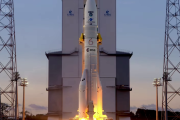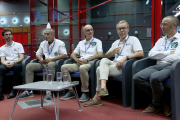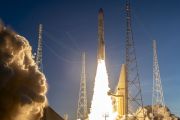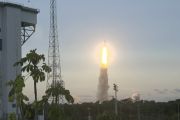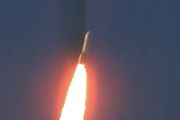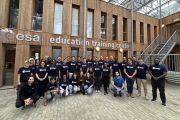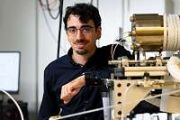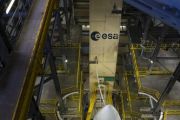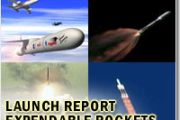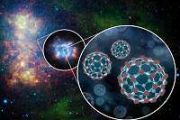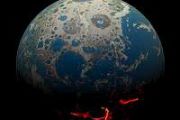
Copernical Team
Producing fuel on Mars using astronaut wastewater
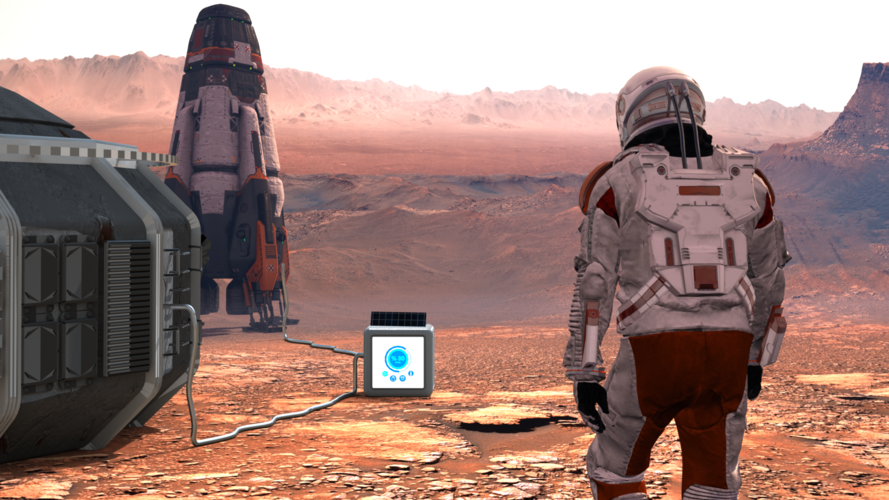
In future missions to Mars, astronauts will need to maximise the use of all resources available on site to produce essential supplies like oxygen, water and fuel. A team from Spanish technological centre Tekniker and the University of Cantabria is developing a system that uses sunlight to turn carbon dioxide and wastewater into methane, which can be used as fuel.
Happy holidays from Hera!
 Image:
Happy holidays from Hera!
Image:
Happy holidays from Hera! Earth from Space: Star cities
 Image:
With the festive season approaching, even Earth-observing satellites are getting into the spirit, capturing a stunning compilation of European cities that resemble stars.
Image:
With the festive season approaching, even Earth-observing satellites are getting into the spirit, capturing a stunning compilation of European cities that resemble stars. Hera asteroid mission in your house
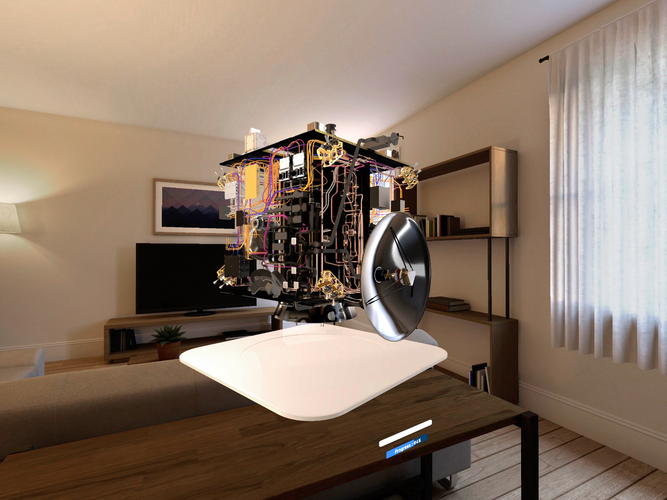 Image:
Hera asteroid mission in your house
Image:
Hera asteroid mission in your house Year in images 2024

Year in images 2024
Our year through the lens: a selection of our favourite images for 2023
China launches four Earth-observation radar satellites into orbit
 China successfully launched four Earth-observation radar satellites into space early Tuesday morning aboard a Long March 2D rocket, according to China Aerospace Science and Technology Corporation (CASC). The launch took place at 2:50 am from the Taiyuan Satellite Launch Center in Shanxi province, marking a significant step in China's expanding satellite network.
The four satellites, named
China successfully launched four Earth-observation radar satellites into space early Tuesday morning aboard a Long March 2D rocket, according to China Aerospace Science and Technology Corporation (CASC). The launch took place at 2:50 am from the Taiyuan Satellite Launch Center in Shanxi province, marking a significant step in China's expanding satellite network.
The four satellites, named A swarm of sensors and robots showcases Moon exploration potential
 A unique lunar research initiative is underway in the LUNA hall, where the German Aerospace Center (DLR) is advancing exploration technologies for the Moon. At the core of the project is a swarm navigation network, connecting payload boxes, sensors, rovers, and astronauts into a synchronized web for seamless communication and navigation.
"Every robot, sensor or astronaut becomes a particip
A unique lunar research initiative is underway in the LUNA hall, where the German Aerospace Center (DLR) is advancing exploration technologies for the Moon. At the core of the project is a swarm navigation network, connecting payload boxes, sensors, rovers, and astronauts into a synchronized web for seamless communication and navigation.
"Every robot, sensor or astronaut becomes a particip Space component commands highlight warfighting efforts at Spacepower Conference
 Space component field command leadership came together to discuss successes and challenges and provide insights into their missions during a panel at the Spacepower Conference in Orlando.
As adversaries like China and Russia continue to strengthen their space capabilities, the U.S. Space Force has emerged as an indispensable component of defense strategy, ensuring that space remains secure
Space component field command leadership came together to discuss successes and challenges and provide insights into their missions during a panel at the Spacepower Conference in Orlando.
As adversaries like China and Russia continue to strengthen their space capabilities, the U.S. Space Force has emerged as an indispensable component of defense strategy, ensuring that space remains secure Space Machines Company unveils Optimus Viper rapid response spacecraft
 Space Machines Company (SMC) has introduced Optimus Viper, a rapid-response spacecraft designed to protect critical space assets and deliver high-fidelity intelligence. This cutting-edge platform operates within 10 kilometers of target satellites, providing unprecedented insights and actionable intelligence for space infrastructure security.
The launch of Optimus Viper marks a significant
Space Machines Company (SMC) has introduced Optimus Viper, a rapid-response spacecraft designed to protect critical space assets and deliver high-fidelity intelligence. This cutting-edge platform operates within 10 kilometers of target satellites, providing unprecedented insights and actionable intelligence for space infrastructure security.
The launch of Optimus Viper marks a significant Revolutionizing space-based thermal systems: AFRL Spirral Launch On SPX-31
 The Air Force Research Laboratory, or AFRL, launched the Space Power InfraRed Regulation and Analysis of Lifetime, or SPIRRAL, experiment, Nov. 4, 2024. SPIRRAL, flown by AFRL through the DOD Space Test Program, will characterize the performance of Variable Emissivity Materials, or VEMs, an approach toward solving thermal challenges for space vehicles while on-orbit.
VEMs are surface finis
The Air Force Research Laboratory, or AFRL, launched the Space Power InfraRed Regulation and Analysis of Lifetime, or SPIRRAL, experiment, Nov. 4, 2024. SPIRRAL, flown by AFRL through the DOD Space Test Program, will characterize the performance of Variable Emissivity Materials, or VEMs, an approach toward solving thermal challenges for space vehicles while on-orbit.
VEMs are surface finis 



